The first Star Trek pilot, The Cage, was produced in 1964. To celebrate its fiftieth anniversary, this December we are reviewing the second season of the original Star Trek show. You can check out our first season reviews here. Check back daily for the latest review.
I, Mudd is delightfully silly.
This is probably the broadest Star Trek comedy episode ever produced. It is very difficult to imagine any Star Trek ensemble outside the original cast pulling off an episode like this. While The Trouble With Tribbles is easily the show’s most iconic comedy episode (and the franchise’s, to boot), there is something rather plucky and endearing about I, Mudd. One of features of the later Star Trek spin-offs was a tendency to take themselves quite seriously. This isn’t a problem of itself, but it does make it impossible to do a show like I, Mudd.
As with other second-season episodes, there is a sense that the show is stretching its wings a bit. Catspaw was a clear attempt to do a horror story, and Wolf in the Fold was a slasher or occult film in Star Trek form. Episodes like Amok Time and Journey to Babel are very consciously building out the Star Trek universe. Episodes like I, Mudd and The Trouble With Tribbles demonstrate that Star Trek can do comedy.
To be fair, it is perfectly reasonably to argue that shows like I, Mudd led the show to think that Spock’s Brain was a good idea. Still, I, Mudd is just so much fun – demonstrating the sense of goofy and theatrical fun that ran through so much of classic Star Trek.
In a way, there’s a sense that I, Mudd is the series having a bit of fun at its own expense. After all, it is an episode absolutely soaked in Star Trek tropes and storytelling conventions. There are androids to be bested. There’s a dead civilisation to cause trouble. There is a utopian society to be destroyed. There is a plan to invade the Federation to be foiled. I, Mudd takes the logic that powered scripts like What Are Little Girls Made Of?, The Changeling and The Apple, and plays it all as comedy.
In many respects, I, Mudd could be seen as Star Trek making fun of itself, taking aspects of the series that had been played seriously in the past, only to acknowledge their absurdity and bask in the ridiculousness. There’s a very canny self-awareness of I, Mudd, right down to the knowing title. At one point, Kirk pauses to critique the script from inside it. As things get serious towards the climax, he reflects, “So far this thing has had its amusing aspects, but that threat the androids made about taking over all the humans in the galaxy is not very funny.”
There are quite a few knowing and winking references throughout the episode, drawing attention to the fact that I, Mudd is an episode of a sixties science-fiction television show. The ensemble are consciously hamming it up, to the point where they seem to spend the entire show smirking – despite the obvious danger posed by Norman and the androids. The climax involves a lot of the crew “acting”, from Uhura’s staged betrayal through to Spock and Mudd playing with imaginary explosives.
At one point, Scotty and McCoy mime playing imaginary instruments. Samuel Matlovsky‘s soundtrack has a great deal of fun with this. As the camera cuts between the playacting and the androids’ reactions, the music changes dramatically. The soundtrack is ambient while we’re focused on Kirk and the Alices, but a bit more eclectic when focused on McCoy and Scotty. However, even the imaginary music from McCoy and Scotty feels delightfully “off” – these are not even sounds matching the imaginary instruments they are playing. How brilliantly illogical.
There is a lot of endearing goofiness to I, Mudd – right down to the sinister and subversive invasion plot hatched by these rogue androids. As with the androids in What Are Little Girls Made Of?, these androids plan to invade and control the Federation. However, they don’t plan conquer from the top down – abducting and replacing key figures. Instead, they plan to conquer from the bottom up. They will conquer mankind by serving them. It is a plan that is fiendishly clever in its absurdity.
Even ignoring the fact that it raises some interesting philosophical questions about the nature of conquest and freedom and imperialism, this plays into the franchise’s core themes with a level of wry self-awareness. One of the more interesting themes of the original Star Trek, especially in light of how Roddenberry would go on to develop the Federation, is a firm rejection of utopianism. Over the course of the series, Kirk and his crew topple and destroy several societies that claim to be “paradise”, revealing them to be oppressive or decadent.
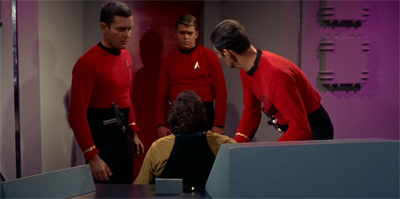
“He’s unconscious.”
“But he’s the one in the gold shirt!”
“What do we do?”
“I don’t know! We’re not trained for this!”
This is, in many ways, an example of Star Trek reflecting the Cold War mentality. As J.P. Telotte contends in The Essential Science Fiction Television Reader:
In such moments Kirk is at his most American, espousing the notion that struggle against obstacles is itself a virtue. For the cold warrior Kirk, a utopia (recall that ‘utopia’ was often negatively associated with communism) would be inherently dehumanising.
This plays out in episodes like This Side of Paradise or Return of the Archons, where societies appear to have stagnated while approaching perfection.
There is, of course, a retrospective irony to all of this. Discussing the history of his creators, Norman explains that the development of robot servants allowed the society to take the focus off menial tasks and to concentrate on more meaningful pursuits. “They were, as you say, quite humanoid, but, unlike your civilisation, robots were common,” he tells Kirk. “We performed the necessary service functions and freed our makers to evolve a perfect social order.”
In a way, this prefigures the technologically deterministic aspects of the Star Trek mythos that would come to the fore in Star Trek: The Next Generation. Although the economy of the Federation is never thoroughly explored, the show hints quite heavily that the development of the holodeck and the replicator have freed mankind from material wants by providing anything that could be desired. There is a very reasonable argument to be made that Kirk would have toppled that version of the Federation, had he encountered it.
One of the more interesting aspects of I, Mudd is the way that it emphasises Kirk’s anti-utopian sentiments to an almost absurd degree. He isn’t worried about Norman capturing his crew, he is worried that his crew might come to like it in this new world. When Norman conspires to travel out into the cosmos and help mankind, Kirk doesn’t seek to warn mankind or argue against it. Instead, he unilaterally decides to deny mankind that opportunity.
Noting the androids’ loyalty to Mudd, Spock observes, “Perhaps of more concern is the fact that this android population can literally provide anything a human being could ask for in unlimited quantity.” Kirk responds, “Yes, I know. That’s what worries me. How will my crew react in a world where they can have everything they want simply by asking for it?” As if to underscore how exaggerated Kirk’s concern is, we get a delightfully weird cut-away scene of Chekov being eccentric in very Chekovian ways. It is a punchline, rather than a sombre warning.
After all, as world-conquering schemes go, Norman’s invasion plan isn’t the worst. “We shall serve them,” he boasts. “Their kind will be eager to accept our service. Soon they will become completely dependent upon us.” Although this leads to a rather brilliant twist on the “we shall take care of them” villainous cliché, it is worth noting that Norman’s plan quite obviously hinges on mankind being stupid and foolish enough to be taken in by this. Kirk’s terror at the prospect suggests that he believes mankind are stupid and foolish enough to be taken in by this.
Never mind that the presence of the androids would give mankind more opportunity to do medical research or space exploration or other philosophical pursuits. I, Mudd allows characters like Spock, McCoy and Scotty to be tempted by the prospect – suggesting that this utopia is not as horrific as Kirk suggests. There’s nothing as horrific as “red hour” or disappearances, nor anything as brutal as Vaal teaching natives to kill in his name. In some ways, while his concerns about “birds in a gilded cage” ring true, I, Mudd feels almost wryly critical of Kirk’s anti-utopian stance.
Even outside of the fun that I, Mudd has with Star Trek narrative conventions, there is a lot of fun to be had here. The cast are given a significant amount of material to work with. Walter Koenig does good work as Chekov in his small scene. Nichelle Nichols gets something to do. Shatner gets to over-act a bit. Nimoy gets to be wry. While unlikely to rank as a career highlight for anybody involved, there is a clear sense that everybody is having a good time on the show.
As the name implies, I, Mudd also marks the return of actor Roger C. Carmel as huckster Harcourt Mudd. Mudd has the distinction of being one of very few recurring adversaries for James Tiberius Kirk. He is the only character outside the crew to recur over the show’s three-year run. He is one of only two opponents to face off against Kirk twice in live action. He has also appeared Star Trek: The Animated Series.
Mudd is an intriguing character for several reasons. Roger C. Carmel is great in the role. However, it’s also interesting how Mudd seems to brush up against Roddenberry’s “no space pirates” edict, presenting something of an old-fashioned huckster. As creator Stephen Kandel noted in an interview with Starlog, Mudd contrasted effectively with Kirk:
“Harry Mudd was a marvelous character because of the highly recognizable human quality set against the alien-in-time or alien-in-space activity that evolved. That’s what made it amusing, and it’s also hard to do because you had stern-jawed Kirk who would meet an eight-foot intelligent reptile and deal with him as any astronaut would. Then, the reptile would meet Harry Mudd, whose first impulse would be to run and hide, and second impulse would be to sell it scale enhancer.”
Mudd is very much a character who would not comfortably fit in the world of any of the later Star Trek shows, with the possible exception of Star Trek: Deep Space Nine. Interestingly (or, perhaps, frustratingly), Neelix is probably an example of what a Mudd-like character would look like on a later Star Trek series.
It is also worth noting that Mudd was such a success that the producers considered bringing him back for a third episode. As Stephen Kandal told Starlog in the same issue, the episode fell through when Carmel was unavailable:
“They were planning more of Harry Mudd, but then Roger got involved in a feature and couldn’t make a deal,” says Kandel. “He was the character to such a large degree that no one else could possibly play the part.”
Mudd has, appropriately, become a fixture of the expanded Star Trek universe – he has appeared quite a few times in novels and comics. The last two Star Trek episodes adapted for Bantham came with a third original Harry Mudd story. The character appeared in The Animated Series, voiced by Carmel. After Carmel’s death, Tom Wyner provided his voice for The 25th Anniversary.
Of course, I, Mudd marks another important moment in the evolution of Star Trek, beyond the reappearance of Harry Mudd and the introduction of straight-up comedy. This is the first script produced and air featuring the work of David Gerrold. Hired to do a re-write on the strength of the script for The Trouble With Tribbles, Gerrold did a polish on the episode:
I did quite a bit of work, actually. They had actually gotten a bargain with The Trouble with Tribbles script and they had an extra 1,500 bucks in the budget. Gene L. Coon said, ‘Well, you know, the kid’s entitled to the 1,500 bucks he would have gotten. Let’s see what he can do on a rewrite of I, Mudd. It doesn’t cost us anything.” That went on behind the scenes. I was not part of that conversation, but I know that happened. He called me in and said, “Read the script.” I said, “OK.” He said, “We get them all down to the planet at the end of act two. That’s halfway through the show. We really want to get them on the planet at the end of act one, at the 15-minute mark, first commercial.” He told me they’d been arguing about it for two weeks and hadn’t been able to solve this problem.
Gerrold would become a monumentally important figure over the rest of the franchise. He worked on the show through the third season and into The Animated Series. He was a massive influence on The Next Generation, even if he never got a creator or writer credit. Giving Gerrold a job like this so soon was a huge vote of confidence from Gene L. Coon, one that would pay off.
It is worth noting that I, Mudd is an episode that actually suffers from its place in production order. When watching the episodes in the order that they were produced, I, Mudd comes right before The Trouble With Tribbles. One is an endearing and amusing Star Trek comedy. The other is regarded as one of the best episodes the franchise ever produced. I, Mudd inevitably suffers in any direct comparison. At best, it seems like a warm-up comedian trying to sooth the audience before the big event.
The production order differs rather dramatically from the broadcast order on classic Star Trek. The DVDs and blu rays are traditionally arranged in broadcast order, and trying to re-watch the show in production order causes all manner of frustration as the user hops between discs. However, watching the show in broadcast order introduces all kinds of continuity issues, like the uniform design in Where No Man Has Gone Before and Chekov’s wig in the early part of the second season. Good luck to anybody trying to watch in stardate order.
The reasons for the shuffle between broadcast and production order are various and complicated. The Man Trap was the first episode of the show to air because it was the only episode finished that came close to satisfying the network’s requirements. In contrast, production on Amok Time was taken slower because the production team knew that a Spock-centric Vulcan episode would be a pretty impressive season opener. Although it was the first of the season produced, Catspaw was always going to be broadcast later in the season, near Halloween.
In a way, these shifts provide a nice barometre for how much or how little faith the production team had in the episodes. The episodes pushed furthest forward were those that the producers and network were eager to broadcast – the ones that they felt might make the most significant impact near the start of the season. Amok Time was the fifth produced and the first aired. Mirror, Mirror was the tenth produced and the fourth aired. Journey to Babel was the fifteenth produced and the tenth aired.
It should be noted that the production and broadcast orders tended to line up a lot better on the shows that followed. When the later Star Trek shows did not synch up, it was generally in exceptional cases. The last-minute decision to extend Improbable Cause into a two-parter pushed Through the Looking Glass into production while The Die is Cast was written. Location work and actor scheduling made it easier to shoot Carbon Creek before Shockwave, Part II. Family was allowed extra prep time, and so shot later than The Best of Both Worlds, Part II.
This does introduce some interesting continuity issues for continuity-minded fans. After all, what is the best way to watch the series? By air date or by production order? One imagines that hardcore Star Wars fans face the same problem when it comes to the prequels. Given the three prequels ruin the twist in The Empire Strikes Back, how best to integrate them into a viewing experience? (This, naturally, assumes that the person asking the question is so hardcore that skipping the prequels is not an option.)
There is a bit of a conflict here. On the spin-off Star Trek shows, it is generally accepted that broadcast order is the best way to watch things. After all, it makes sense to watch Unification, Part II after (rather than before) Unification, Part I. Continuity was never too heavy on Star Trek: The Next Generation or Star Trek: Voyager, but the team generally worked it so that references and plot points flowed with broadcast order rather than production order.
On the other hand, classic Star Trek is probably best viewed in production order. After all, the focus wasn’t so much on episode-to-episode continuity as it was on “it takes a while to get everything figured out.” Continuity issues around character roles, performance quirks, costuming, back story and hairstyling occasionally start out rough before working themselves out. So Uhura’s early appearances feature her in yellow, rather than red. Watching in production order has her go from yellow to red. Broadcast order has her go from red to yellow to red.
Truth be told, this is largely an academic problem. The original Star Trek is so rigidly episodic that the episodes can be watched in almost any order without too many serious hiccups. Just pretend Chekov was in the loo for the first season episodes, like Walter Koenig does. When asked the best order in which to watch Star Trek, the logical answer would seem to be “in any order you want, for the most part.”
To be fair, the fact that there is such a debate between broadcast and production order does say a number of things about the nature of Star Trek fandom. It suggests that there is a “right” way to watch the show, perhaps foreshadowing Richard Arnold’s aggressive attempt to strike the entirety of The Animated Series from the “canon” and foreshadows a whole strand of fan debate around the “continuity” (or lack thereof) of Star Trek: Enterprise.
More broadly – and much more endearingly – it demonstrates the extent to which Star Trek fans make an effort to build out from the episodes in question and what is shown on screen. It demonstrates that a lot of perceived continuity on the original Star Trek is a fan construct dependent on external factors. As Henry Jenkins notes in Textual Poachers: Television Fans and Participatory Culture:
For fans and perhaps many regular viewers, Star Trek is experienced as something closer to a serial. No episode can be easily disentangled from the series’ historical trajectory; plot developments are seen not as complete within themselves, but as one series of events among many in the lives of its primary characters. For the fan, it is important to see all of the episodes “in order” in a way that it is not for the average viewer of that same program. The character’s responses to a particular situation are seen as growing from that character’s total life experiences and may be explained through references to what has been learned about that character in previous episodes.
This is perhaps a more casual form of “continuity” than most Star Trek fans would understand by the term, but it is an intriguing form of continuity. This form of continuity is a jigsaw puzzle of individual pieces that can be assembled to reveal a more complex and intriguing image, rather than a mould which dictates (and restricts) the shape of a narrative.
(This feels like an appropriate place for a personal confession. Given how much my enjoyment of I, Mudd rests on my affection for the way it plays with Star Trek tropes that have established across the last season-and-a-half, it goes without saying that I am very fond of that sort of continuity. I am, as a rule, less fond of the “but a throwaway line of dialogue written by another writer tucked away in another show says…” school of continuity. Which makes it fun to try to fit things together, but is less interesting in a “what’s it all about?” sort of way.)
Of course, I, Mudd comes with considerable baggage and is far from perfect. Most obviously, the episode is casually sexist in the way that so many classic Star Trek episodes are casually sexist. When the androids try to tempt the crew with their inner desires, Scotty is tempted by their engineering and McCoy is tempted by their lab facilities. What tempts Uhura? How do the androids – to quote Kirk – hit her “weakest point”? They promise her “immortality and eternal beauty.”
Because, you know, women are shallow and stuff – the same sexist subtext that underpinned the two female guest characters in The Deadly Years. Of course, Uhura ultimately rejects the fantasy, even pretending to betray the crew to mislead the androids – in what may be a knowing subversion of the “female character swaps sides for shallow reasons” trope that Star Trek used so regularly. However, it’s still frustrating that the major male characters are tempted by the promise to keep them busy, whereas Uhura is tempted by the promise to keep her beautiful.
To be fair, there is Chekov. Of the male characters, his temptation is the most superficial. He is tempted by the prospect of having hot, dirty sex with androids programmed by the “unprincipled, evil-minded, lecherous kulak” Harry Mudd. This is one of those Chekov scenes that really should seem pervy and creepy, but Walter Koenig is very good at making it funny instead. It is still a desire as shallow as Uhura’s temptation to remain young and beautiful. The difference is that the episode plays the Chekov sequence as a dirty joke, but plays Uhura’s like a dramatic conflict.
Still, as with Wolf in the Fold, there is good and interesting stuff that exists outside the background radiation of casual sixties sexism. This doesn’t excuse the show’s treatment of Uhura in general, but that shoddy treatment doesn’t necessarily invalidate the rest of the show either. I, Mudd is a delightful little comedy episode that is smart and funny enough to justify itself, while proving that Star Trek can do comedy successfully. Its biggest problem is that it is perhaps a little too close to the episode that proves Star Trek can do comedy brilliantly.
You might be interested in our other reviews from the second season of the classic Star Trek:
- Catspaw
- Metamorphosis
- Friday’s Child
- Who Mourns for Adonais?
- Amok Time
- Supplemental: Spock’s World by Diane Duane
- The Doomsday Machine
- Supplemental: New Visions #3 – Cry Vengeance
- Wolf in the Fold
- The Changeling
- The Apple
- Supplemental: (DC Comics, 1984) #43-45 – The Return of the Serpent!
- Supplemental: (IDW, 2009) #13 – The Red Shirt’s Tale
- Mirror, Mirror
- Supplemental: Deep Space Nine – Crossover
- Supplemental: New Visions #1 – The Mirror, Cracked
- Supplemental: (DC Comics, 1984) #9-16 – New Frontiers (The Mirror Universe Saga)
- Supplemental: Mirror Images
- Supplemental: Mirror Universe – The Sorrows of Empire by David Mack
- Supplemental: (IDW, 2009) #15-16 – Mirrored
- The Deadly Years
- I, Mudd
- Supplemental: (Gold Key) #61 – Operation Con Game
- Supplemental: (DC Comics, 1984) #39-40 – The Return of Mudd
- The Trouble With Tribbles
- Supplemental: The Galactic Whirlpool by David Gerrold
- Supplemental: Alien Spotlight – Tribbles
- Bread and Circuses
- Journey to Babel
- A Private Little War
- The Gamesters of Triskelion
- Obsession
- The Immunity Syndrome
- A Piece of the Action
- By Any Other Name
- Return to Tomorrow
- Patterns of Force
- The Ultimate Computer
- The Omega Glory
- Assignment: Earth
- Supplemental: Assignment: Eternity by Greg Cox
- Supplemental: (DC Comics, 1989) #49-50 – The Peacekeepers
- Supplemental: (IDW, 2008) Assignment: Earth
Filed under: The Original Series | Tagged: androids, asimov, broadcast order, canon, chekov, comedy, continuity, David Gerrold, Harry Mudd, i mudd, james kirk, logic, Mudd, paradox, production order, robots, star trek, Uhura, utopia |















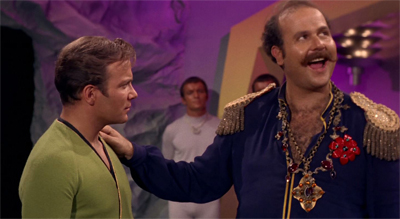
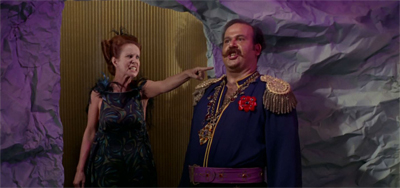

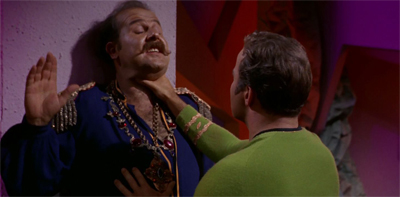
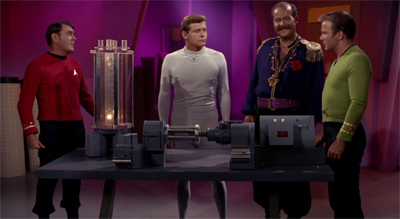
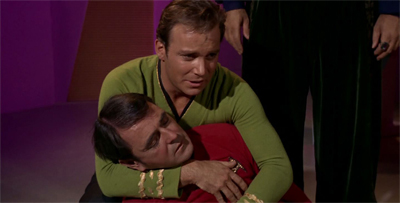
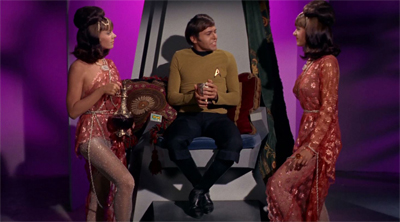
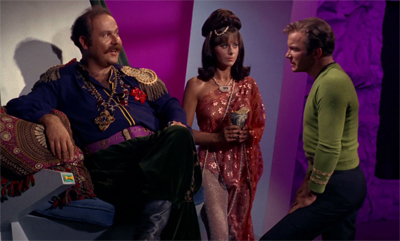
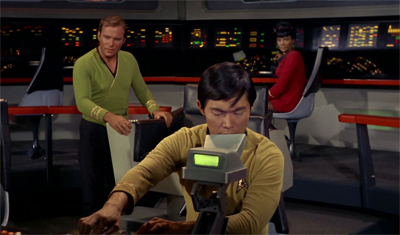
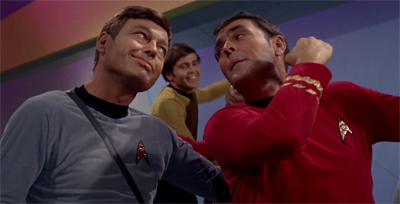







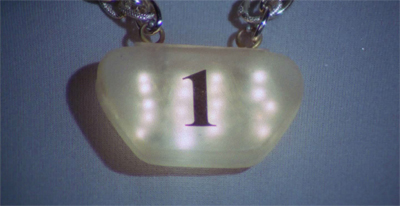







Leave a comment